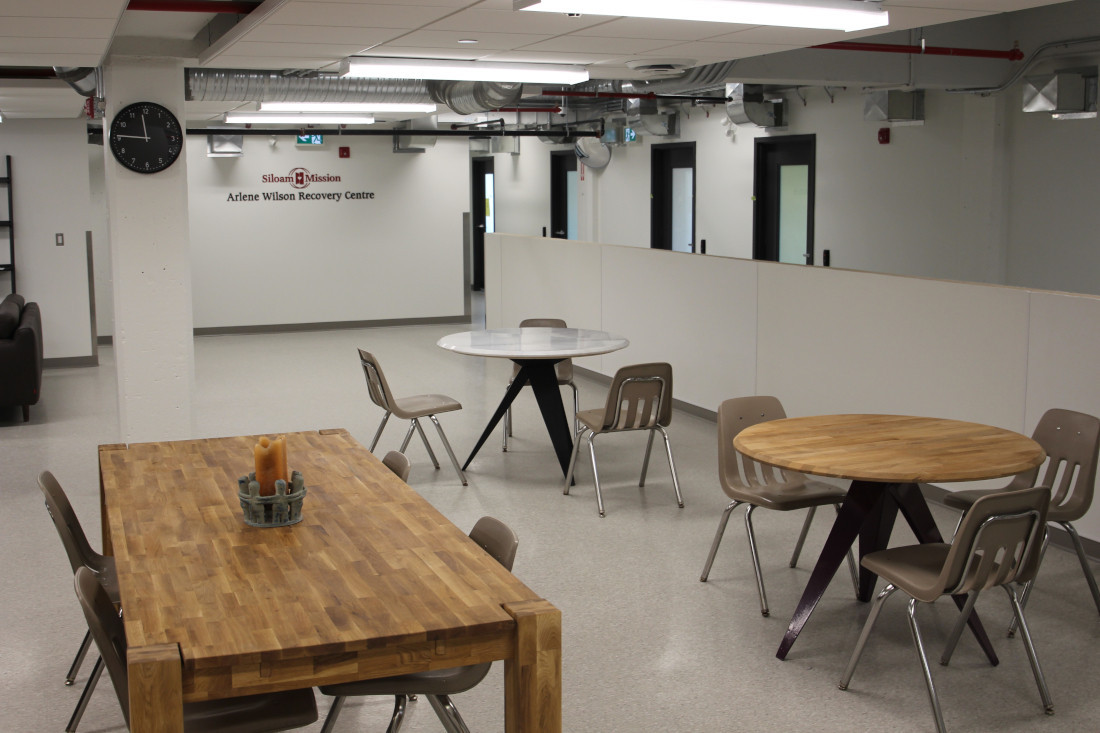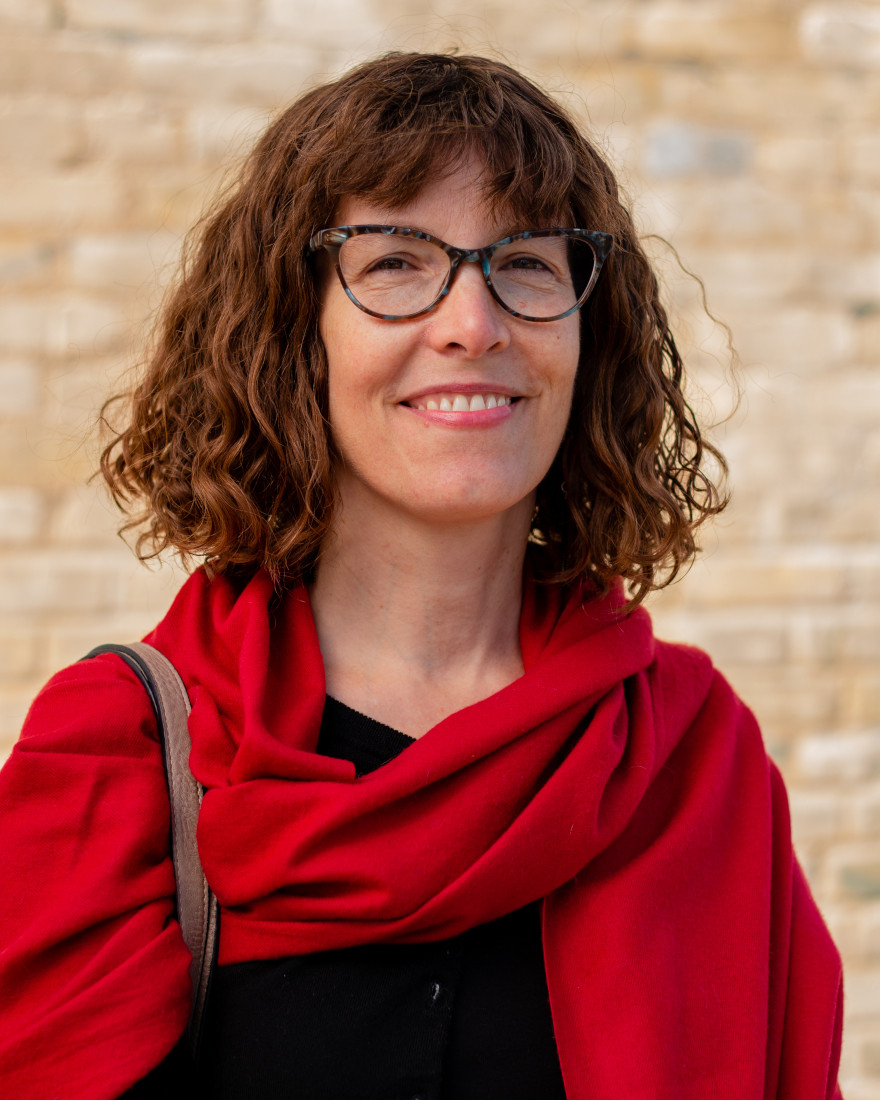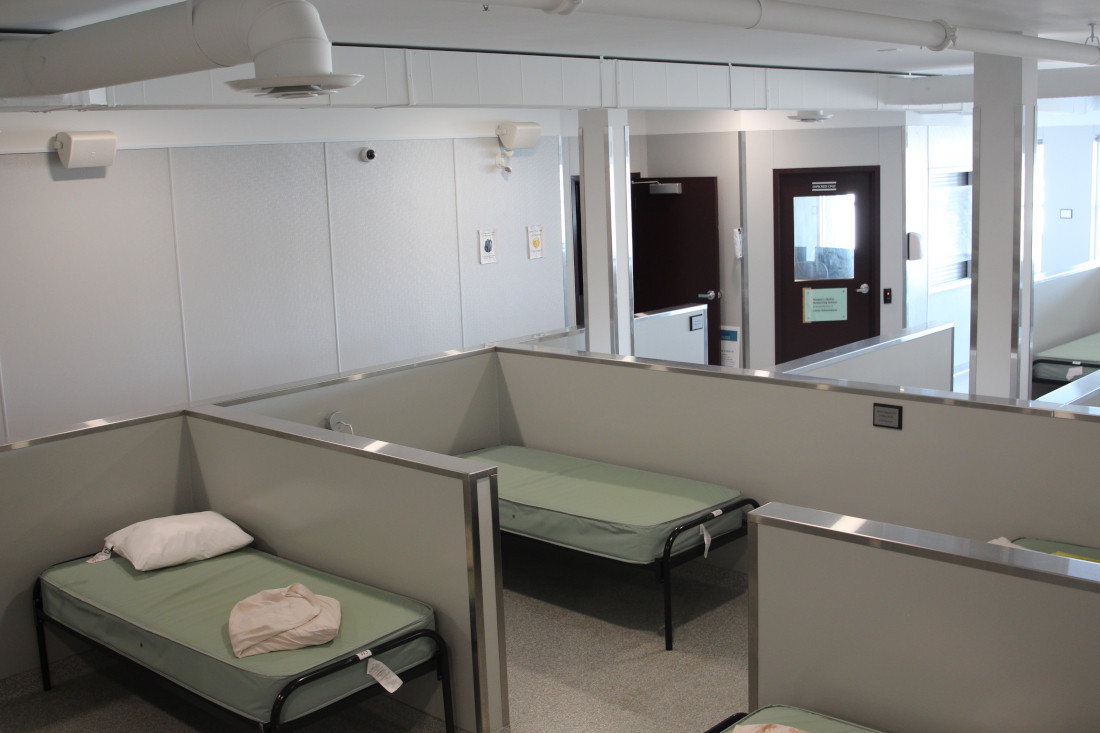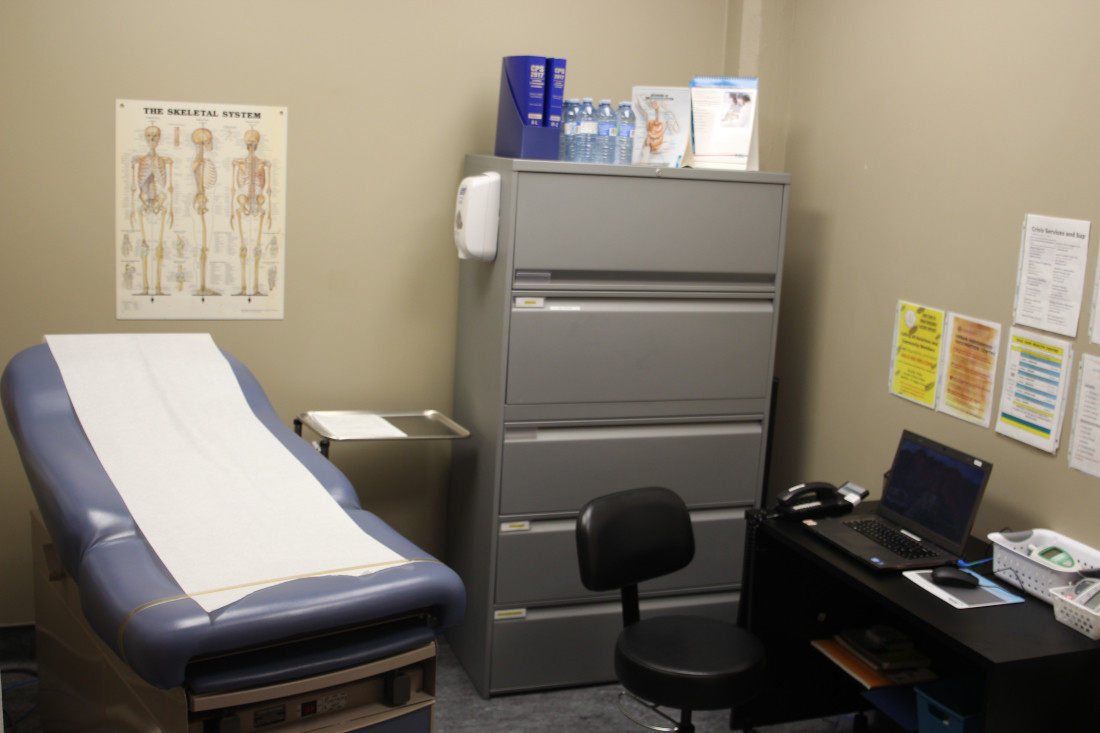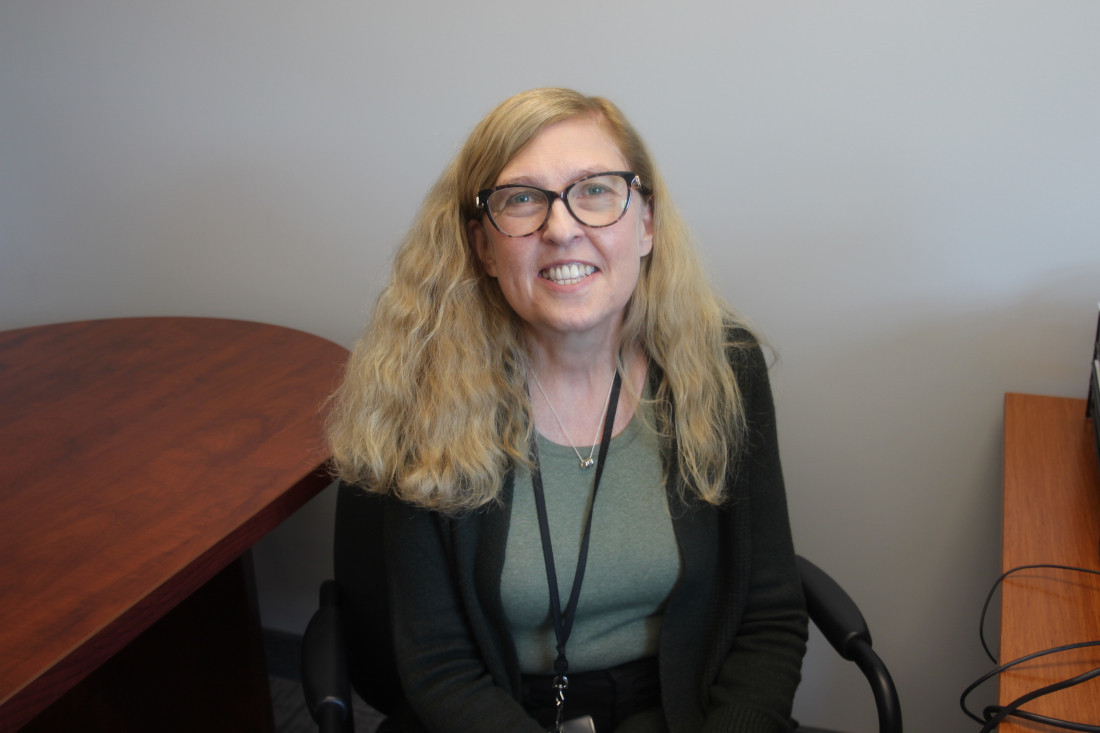Ending homelessness
Grassroots organizations break barriers and build community
On Nov. 2, End Homelessness Winnipeg released the 2021 Interim Street Census. The data for this report was gathered over a 24-hour period from April 21 to 22 of this year and offers a glimpse into houselessness in Winnipeg and the most-impacted demographics.
The report observed 1,127 people experiencing houselessness in that 24-hour period. It also sheds light on the demographics within that unhoused population. Sixty-six per cent of the unhoused individuals identified as Indigenous. Seventy-one per cent were men, 27.5 per cent women and 1 per cent gender diverse. Twenty-two per cent were unaccompanied youth (younger than 24), with 46 per cent adults (aged 25 to 49) and 28 per cent adults older than 50.
This study, and many others like it, prompt questions about what needs to change to help those without consistent, safe and reliable shelter.
‘Houselessness’ is not one-size-fits-all
Each person has their own story that led to them experiencing houselessness, but this circumstance is often misunderstood as something that only impacts people who are unmotivated, addicted to drugs, criminal or lazy, among other stereotypes. These misconceptions perpetuate many stigmas about those who do not have safe and consistent shelter.
“There is a lot of stigma and stereotypes about homelessness and about other life scenarios or identities that often get inflated by homelessness,” Kris Clemens, manager of communications and community relations at End Homelessness Winnipeg, says.
A person can experience houselessness for many reasons.
“Myths around houselessness and poverty is that it is (a person’s) own fault, and they just have to pull themselves up by their bootstraps, get a job (and) try harder,” Chelsea McClelland, a social worker at NorWest Co-op Community Health, says. “Everyone deserves the dignity and safety of (a) place to live no matter who they are or what they have or haven’t done.”
Colonialism at work
As outlined in the 2021 Interim Street Census, houselessness disproportionately impacts Indigenous Winnipeggers. Indigenous houselessness is distinct from houselessness in general, because it encompasses the impacts of intergenerational trauma caused by colonialism through residential schools, Indian day schools and the Sixties Scoop, as well as how these institutions attempted to erase cultural practices and traditional languages.
“There are a lot of racist stereotypes about Indigenous homelessness ... which completely overlooks the long history of colonial policies that worked towards forced assimilation of Indigenous peoples and systemic impoverishment and chronic lack of (funding),” Clemens says.
In 2018, Statistics Canada reported on the demographic percentages of youth and adults in correctional facilities, which demonstrated how the criminal justice system continually perpetuates the colonialist practices that contribute to the overrepresentation of Indigenous individuals within the unhoused population.
In a statement from the Assembly of Manitoba Chiefs following the report’s release, Grand Chief Arlen Dumas said that Manitoba has “the highest rates of (Indigenous) children in foster care – more than 89 per cent; the highest rates of child poverty at 75 per cent; highest rate of police-involved deaths of our people at 60 per cent; and one of the highest rates of murdered and missing Indigenous women and girls at more than 50 per cent. If this isn’t a crisis, I don’t know what is.”
According to some community organizations, one of the most significant actors in the continued displacement and abuse of Indigenous peoples is the police.
Winnipeg Police Cause Harm (WPCH), founded in 2019, is an organization with the mission to abolish the Winnipeg Police Service and have themulti-million-dollar policing budgets reassigned to community support for those in need.
“Police exist to uphold colonial systems of oppression,” James Wilt, a member of WPCH, says.
The issues go far beyond those shown in the final reports, as actions that take place behind closed doors are not as widely reported.
“So often, we don’t hear about the daily assaults and degradations and harassments and intimidations,” Wilt says. “All of that points to this very constant function of policing as colonial agents to keep Indigenous and Black people in their place – which is to say, out of the sight of ‘white Winnipeg.’”
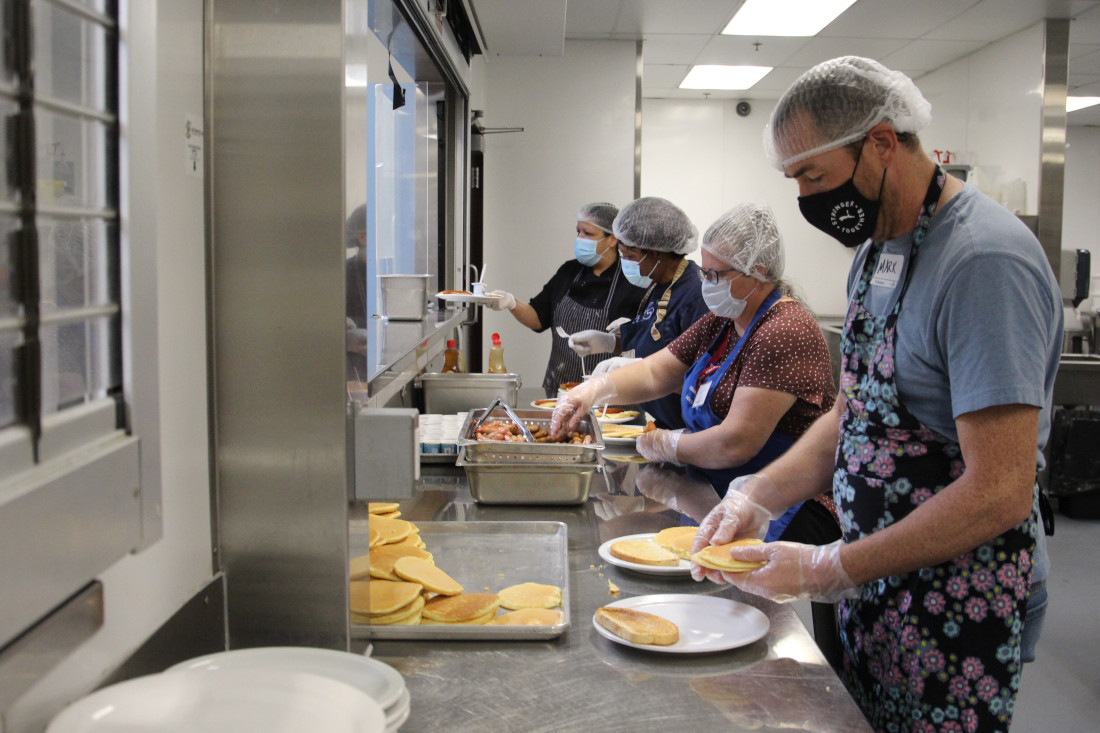
Meals are prepared and served at Siloam Mission’s kitchen. (Supplied photo)
Community-centred organizations create change
Winnipeg has many community organizations that work to support, empower and connect people who lack stable housing. Organizations such as Main Street Project, Comm.UNITY.204, North Point Douglas Women’s Centre, North End Women’s Resource Centre, Aboriginal Health & Wellness Centre and others work with employees and volunteers to provide on-theground, frontline support.
These organizations provide resources like food, clothing and water to those in need, participate in searches for missing persons and create a space for people to build meaningful relationships with others.
People facing houselessness, addiction, unemployment and/or domestic abuse, among many other problems, are often miscategorized by society as “bad” or “lesser.”
“There are always underlying reasons for those things,” Daniel Hidalgo, founder of Comm.UNITY.204, says. He explains how “relieving and refreshing it is amongst those people, both on the frontlines and receiving the services, to just be seen in a different light and to have the compassion and the understanding.”
Hidalgo founded Comm.UNITY.204 in October 2020. The organization’s core members are youth with lived experience in the child-welfare system, but Hidalgo says anyone is welcome to join them along their journey to advocate for the marginalized, give back to the community and be a hub for people to build a meaningful sense of lateral unity, love and empathy.
“Lateral unity: that means working with anyone and everyone. There is no ego in what we do. There is no shame in what we do. There is always the capacity for more engagement,” Hidalgo says.
Hidalgo grew up as a permanent ward in the General Child and Family Services Authority.
“I have always been longing for that family dynamic, that sense of belonging, that sense of worth and validation and that affirmation that I am capable of anything,” Hidalgo says.
When feeling isolated, Hidalgo found community through volunteering, sports and other group activities, which inspired him to encourage others to join groups that make them feel welcomed and valued.
Through relating his own feelings and experiences to others, Hidalgo’s passion for unity and support continues to inspire others.
“Helping is healing, (and) helping is medicine, because it’s not just that we are helping other people, but we are also helping ourselves,” he says.
Barriers to safe and stable housing
For those in need of food, water and shelter, there are still many hurdles to meet basic human needs.
“Almost everybody wants some sort of safe, permanent housing, but they are staying outside because they do not feel safe or comfortable accessing the emergency shelters or safe spaces that are available,” Clemens says.
While Winnipeg desperately needs more affordable housing, governments are moving in the opposite direction. For instance, Brian Pallister’s provincial government aggressively sold Manitoba Housing units and transferred management of existing housing to the private sector. According to a 2019 report from CBC News, between May 2016 and November 2018, the province sold 950 units and transferred management of 800 units.
Due to the critical shortage of available affordable housing in Winnipeg, many of the spaces are allowed, to some extent, to fall into disrepair or become overcrowded,possibly leading to problems with pests, noise and risks of violence.
“It’s not just (that) people are choosing an encampment situation and camping outside to avoid shelter or because there is no space in shelter. They are finding that staying in a tent on a riverbank is safer, more comfortable and more dignified for them than the emergency-shelter system or the low-income housing that is available,” Clemens says.
Beyond affordable housing, marginalized demographics face additional barriers, such as ableist or racist prejudices, when looking to rent a property.
The 2018 Winnipeg Street Health Survey by End Homelessness Winnipeg quotes a participant’s conversation with a landlord. In the conversation, the landlord asked the individual if they are a visible minority, to which the individual affirmed, “yes, Native.” The landlord then said, “Oh, I think the apartment is rented.”
This is a clear demonstration of racial bias that perpetuates the houselessness of racialized, specifically Indigenous, people.
“All of these situations pose barriers that are beyond the ability of one individual themselves to address,” Clemens says. “These are systemic issues that need to be resolved through taking (the) Truth and Reconciliation Calls to Action seriously, through understanding what makes Indigenous homelessness different from other experiences of homelessness and from advancing Indigenous-led solutions for housing and for homelessness.”
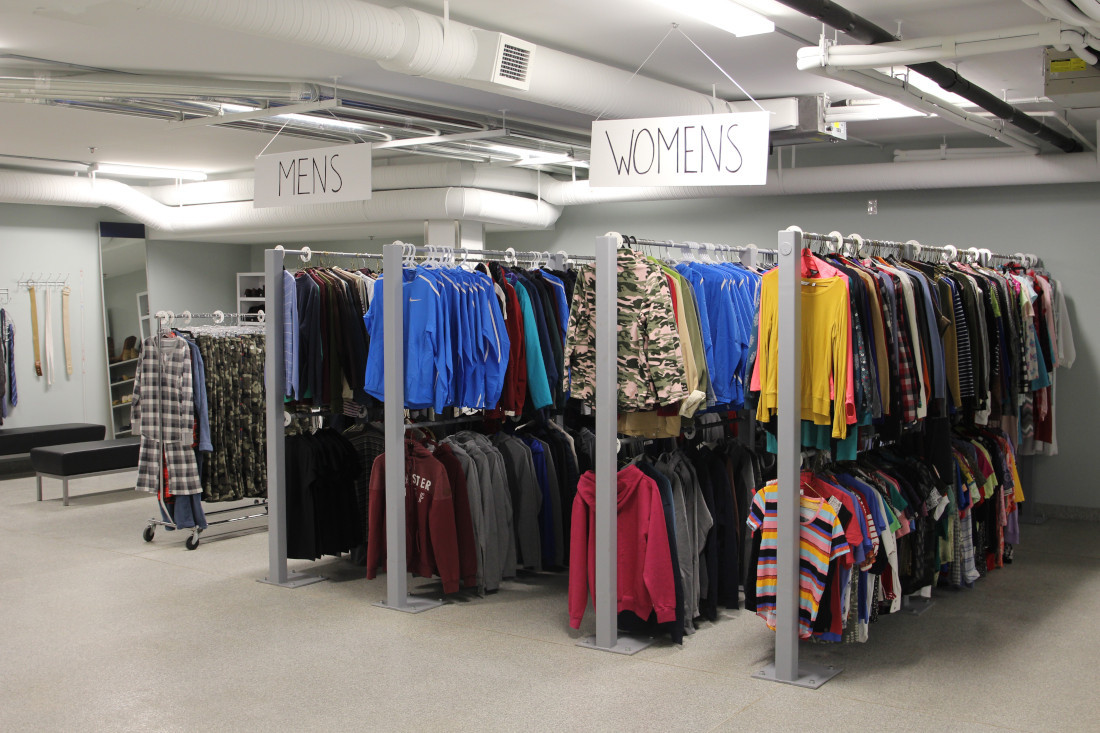
Donated clothing at the Siloam Mission clothing program. (Supplied photo)
When we know better, we can do better
Siloam Mission, a Christian organization providing support programs and resources to Winnipeg’s houseless population, started the year 2021 under fire. Siloam was criticized for their lack of Indigenous cultural practices. Former staff successfully called for the resignation of Siloam’s CEO and board chair through the Not My Siloam campaign.
Siloam Mission released the Indigenous Relations Report and accepted all recommendations made by the report.
“Unfortunately, Indigenous peoples are disproportionately affected by homelessness due to intergenerational trauma and its symptoms – addictions and mental illness,” Kathi Neal, lead executive and director of development at Siloam Mission, says in an email to The Uniter.
“Siloam Mission is constantly evaluating our programs and services to ensure we are applying best practices to everything we do. We are seeking to have a right relationship with Indigenous peoples.”
Every person, organization and system has a long way to go in terms of re-Indigenization. This progress must be led by Indigenous peoples and the work of community-based organizations to ensure all people are seen and heard, regardless of their circumstances or identity.
Ending homelessness doesn’t mean “that we won’t have barriers to accessibility in our public systems,” Clemens says. “Those situations need distinct and separate streams of support in mental health and substance use and accessibility ... this is part of why people need a circle of care.”
Published in Volume 76, Number 10 of The Uniter (November 18, 2021)

